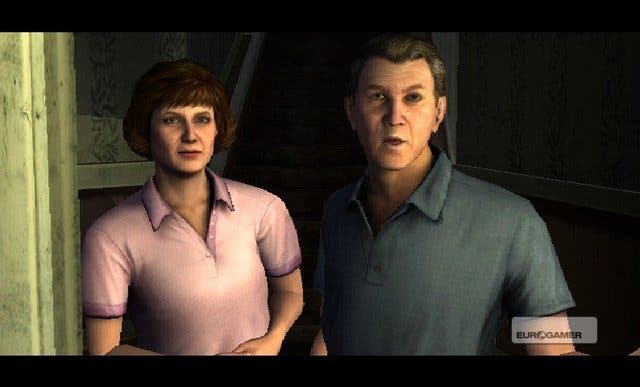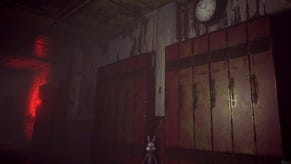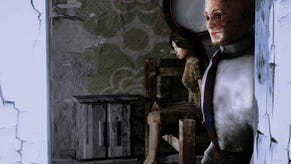Silent Hill: Shattered Memories
Past remaster.
With no weapons to wield, one option is to try and tip bookshelves and statues into the path of pursuing enemies to slow them down, or occasionally you might find the odd flare lying around to help ward off their attentions. Alternatively, you can simply hide from the monsters and wait until they've wandered off elsewhere, but for the most part you'll be left with no choice but to throw them off in the appropriate direction by hurling your Wiimote and nunchuk.
Although it doesn't feel like it when you're caught in a blizzard of panic, throwing them off is also intuitive. If they come at you from the front, throwing the controller in a forward motion flings them off, while the opposite is true if they climb on your back. As soon as the penny drops, a lot of the stress of these nightmare sequences dissipates and you can focus on things like checking the waypoint on the map, or charging forwards in search of an exit. To help make the process of barrelling along at top speed easier, the game allows you to move through a door in one swift motion as long as you're running and holding forward at the same time.
Then again, that's of limited help if you get lost, which you easily can. You can also feel like you're going around in circles. Sometimes this is because you are going around in circles, with environments designed to be disorientating and make you double back on yourself if you just keep going in a straight line, and it's clearly meant to heighten the sense of panic, but it's also potentially frustrating if the process continues without success, and many players are likely to find these sequences frustrating and protracted.

More often that not, though, simple trial and error wins the day, and before long you'll find yourself faced with a mid-level puzzle to solve too. In common with most of the game's tasks, these are some of the most enjoyable bits of Shattered Memories, designed to make you feel quite clever in the process of solving them. Beyond these, the nightmare sequence continues for a few more minutes before you emerge to the relative safety of 'normality'.
What actually is normal is increasingly difficult to fathom as you progress. New characters appear in the oddest of circumstances, and it's not ever clear whether any of this is actually happening. In between the madness, the game switches back to the relative calm of the analyst's couch as you face another round of probing exercises. Some come across as trivial and innocuous, but at some point you realise that your responses have a subtle bearing on how the game plays out too. Characters may respond differently to you, or their clothes and the decor of their house may reflect the results of a colouring-in test.






